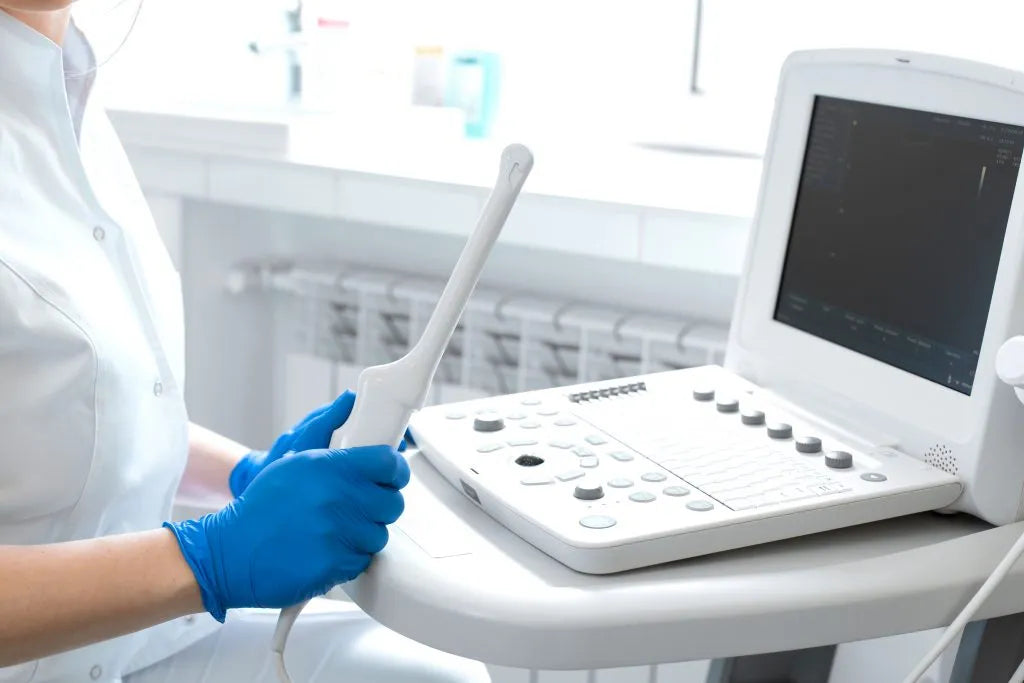Pelvic organ prolapse: everything you need to know.
Do you feel a weight on your lower abdomen or vagina or see a prominent bulge in your genital area? You may be experiencing pelvic organ prolapse (POP). In this article, we tell you what this condition is, how it relates to menopause, and what the typical symptoms are.

What is pelvic organ prolapse?
Pelvic organ prolapse happens when organs located in the pelvic area drop from their normal position and protrude toward the vagina or even outside it. It occurs due to weakened pelvic floor muscles and ligaments. The organs susceptible to prolapse are the bladder, the uterus, the cervical canal, the urethra, the rectum, and the vaginal cuff. However, POP’s most affected organ is usually the bladder (FDA, 2019).Risk factors
The muscles and tissue of the pelvic floor can become weakened, torn, or stretched due to (Weintraub et al., 2020):- A number of pregnancies and deliveries.
- Menopause.
- Aging.
- Obesity.
- Genetic history.
- Chronic constipation.
- Previous surgeries on the pelvic area, such as a hysterectomy.
- Connective tissue conditions, such as Marfan syndrome or Ehlers-Danlos syndrome.
Relation between pelvic organ prolapse and menopause
The decreased levels of oestrogen characteristic of menopause may contribute to POP, as it tends to alter the production and quality of collagen. This protein is essential to the supporting tissues of the pelvic floor, such as muscles and ligaments (Weintraub et al., 2020).
Signs and symptoms to identify POP during menopause
Many women with pelvic organ prolapse are usually asymptomatic. Others only perceive pain in their pelvis, similar to menstruation, and a feeling of weight or pressure in their vagina. However, other symptoms include (FDA 2019; Mayo Clinic, 2020; MedlinePlus, 2021):- A protruding bulge in the vaginal opening or beyond it.
- Urinating constantly at night (nocturia), with or without effort.
- Difficulty in maintaining sexual intercourse.
- A recurring urinary tract infection.
- Problems urinating or defecating.
Diagnosis and treatment
It is important to consult your doctor when you present any genital or pelvic symptoms to rule out POP. A gynecological examination will in many cases diagnose this condition. However, in some cases, you may need more advanced tests to diagnose complications derived from POP, like an ultrasound or magnetic resonance imaging (MRI). Treatment depends on how severe the condition is. Usual treatments include (FDA, 2019):- Kegel exercises or the use of pessaries to strengthen the pelvic floor. A pessary is a device inserted into the vagina that acts as a barrier to keep organs from prolapsing.
- Surgery to reconstruct the pelvic floor and position any prolapsed organs back in the pelvis.
Possible complications
POP is usually not life-threatening. However, severe cases depending on the affected organ can cause complications, such as (Todd, 2021):- Problems defecating (feces retention).
- Urinary retention.
- Urinary incontinence.
- Recurring urinary infections.
- Loss of control regarding feces and flatulence expulsion.
- Kidney damage if there is a blockage of urine flow.
Recommendations to prevent pelvic organ prolapse
POP occurs as a consequence of weakened pelvic tissue. You can prevent this by engaging in healthy habits such as (Mayo Clinic, 2020):- Not smoking.
- Avoid lifting heavy objects.
- Maintaining a health weight & BMI.
- Controlling chronic coughing, as it generates excessive pressure on the thorax, abdomen, and pelvis.
- Strengthening the muscles of the pelvic floor with Kegel exercises.
- Trying not to push when defecating.
- Exercise regularly to strengthen the muscles on your abdomen and torso.


